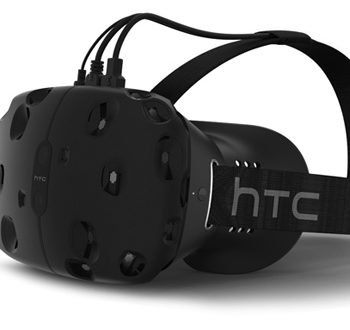Yesterday, we reported that the HTC Vive will set gamers back $799 – $200 more than the Oculus Rift. But with such a pricey purchase, gamers want to make sure their system is ready for SteamVR.
Valve has released its first VR performance test to help end users figure out if their PC is up to scratch, or whether they need to invest in a new GPU before splashing out on a Vive.
The test comes in the form of an app, which features high quality VR content from the Aperture Science Robot Repair demo, designed specifically for the HTC Vive.
The Portal-themed analysis measures your system’s rendering power using a two-minute sequence from demo. After collecting the data, it determines whether your system is capable of running VR content at 90fps and whether VR content can tune the visual fidelity up to the recommended level.
For machines that are not VR-ready, the tool can help determine whether capabilities are bound by graphics card, CPU, or both.
The app can be run on any PC and does not require a headset to be connected to the system. It’s available for anyone to download and test their system.
Download the SteamVR Performance Test for free here.
AMD has stated that all its Radeon R9 390 series and Fury series products, including the R9 Nano can achieve the highest attainable status: ‘Recommended for VR’.
“This performance is a validation of the work AMD has done with Valve and other technology partners to deliver the best VR experiences with our products through the LiquidVR initiative,” said the firm in a statement.
AMD has also released a char summerising the results by GPUs with system configuration details to give gamers an idea of how well their system will work at a glance:
The chart is the result of a test taken on 21st February 2016, with the following system specs: Intel i7-6700K, 2x4GB DDR4-2666 RAM, Z170 motherboard, Radeon Software 16.1.1, NVIDIA driver 361.91, Win10 64-bit.
“We’ve worked very closely with Valve to implement one of AMD LiquidVR’s premier features called Affinity multi-GPU into the Aperture Science Robot Repair demo, which this tool is based on. Think of this as CrossFire technology for VR, where the application lets one GPU render for the left eye, and the other for the right eye. Though the work implementing Affinity mGPU into this application is not finished, it’s already showing significant performance uplift over a single GPU,” said AMD.
“We’re very excited about the HTC Vive and SteamVR experience. We’re also thrilled to bring exceptional VR capability not only to millions of Radeon users who can rest assured that their GPUs are ready to drive the HTC Vive headset, but also to those thinking about buying one of the above-mentioned cards to power a premium VR-Ready experience.”
After Oculus Rift revealed the pricing and availability of its headset back in January, the firm detailed its PC system recommendations, noting that an NVIDIA GTX 970 / AMD R9 290 equivalent or greater would be needed.
 PCR Tech and IT retail, distribution and vendor news
PCR Tech and IT retail, distribution and vendor news




